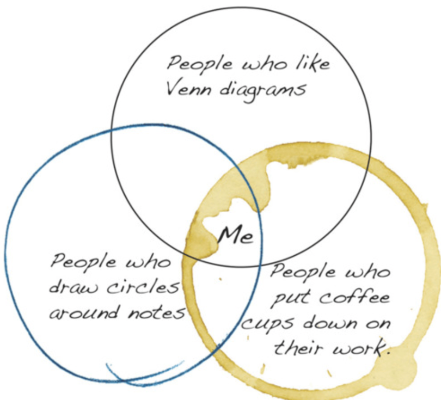Venn diagrams and number sets (self-checking)
Keywords
Venn Diagram,Number Sets,Intersection,Union,Set Theory,Complement,Real Numbers,Rational Numbers,Irrational Numbers,Natural Numbers,Integers,Universal Set,Prime Numbers,Even Numbers,Mathematical Reasoning,Set Relationships
Inquiry questions
| Factual Questions 1. What is a Venn diagram? 2. Draw a Venn diagram for the sets A = {1, 2, 3} and B = {3, 4, 5}. 3. How do you represent the intersection of two sets using a Venn diagram? 4. Illustrate the union of sets A and B where A = {x | x is a prime number} and B = {x | x is an even number}. 5. Show using a Venn diagram the complement of set A in the universal set U. | Conceptual Questions 1. Explain the significance of overlapping regions in a Venn diagram. 2. Discuss how Venn diagrams facilitate understanding of set theory concepts like union, intersection, and complement. 3. How do Venn diagrams help in solving problems involving multiple sets? 4. Explain the difference between the intersection and union of sets as depicted in Venn diagrams. 5. Compare the use of Venn diagrams in representing simple vs. complex set relationships. | Debatable Questions 1. Is the use of Venn diagrams more intuitive than algebraic methods for understanding set theory? Why or why not? 2. Debate the effectiveness of Venn diagrams in teaching logical reasoning and critical thinking. 3. Can Venn diagrams be considered a universal tool for representing all types of set relationships? 4. Discuss the statement: "The simplicity of Venn diagrams masks their power in mathematical reasoning." 5. Evaluate the impact of Venn diagrams on students' ability to visualize and solve problems involving sets. |

Scenario: The Quest for Numerical Knowledge
Background:
In the mystical kingdom of Numeralia, understanding the various types of numbers and their relationships is considered a rite of passage for all young scholars. The Grand Library of Numeralia has an interactive exhibit that features a magical Venn diagram displaying real, rational, irrational, natural numbers, and integers.
Objective:
As a young scholar, you are eager to prove your knowledge. Your quest is to categorize different numbers correctly using the enchanted Venn diagram at the Grand Library.
Investigation Steps:
1. Sorting the Numbers:
- You are presented with various numbers like √3, -16, π/2, and 2/3.
- Determine which category each number belongs to: natural numbers, integers, rational numbers, irrational numbers, or real numbers.
2. Mastering the Categories:
- Use your knowledge to place each number in the correct section of the Venn diagram.
- Explain why each number belongs to its specific category.
3. Challenging Misconceptions:
- Identify common misconceptions about these number sets and clarify them.
4. The Library's Test:
- The exhibit will reveal if you have placed the numbers correctly and offer explanations for any mistakes.
Questions for Investigation:
1. Discovery Question:
- Why is zero so special, and what sets does it belong to?
2. Understanding Number Sets:
- How do rational and irrational numbers differ, and why are they both within the realm of real numbers?
3. Practical Application:
- Can you find examples of irrational and rational numbers in everyday life?
4. Reflection:
- Why is it important to understand the different categories of numbers?
![[MAA 4.5-4.7] PROBABILITY I (VENN DIAGRAMS - TABLES).pdf](https://www.geogebra.org/resource/wasr7qdu/pInOLyVlAEOQZx0P/material-wasr7qdu-thumb.png)
![[MAA 4.5-4.7] PROBABILITY I (VENN DIAGRAMS - TABLES)_solutions.pdf](https://www.geogebra.org/resource/aqzdbw8j/1rIdpoJzeJYnDoHj/material-aqzdbw8j-thumb.png)

